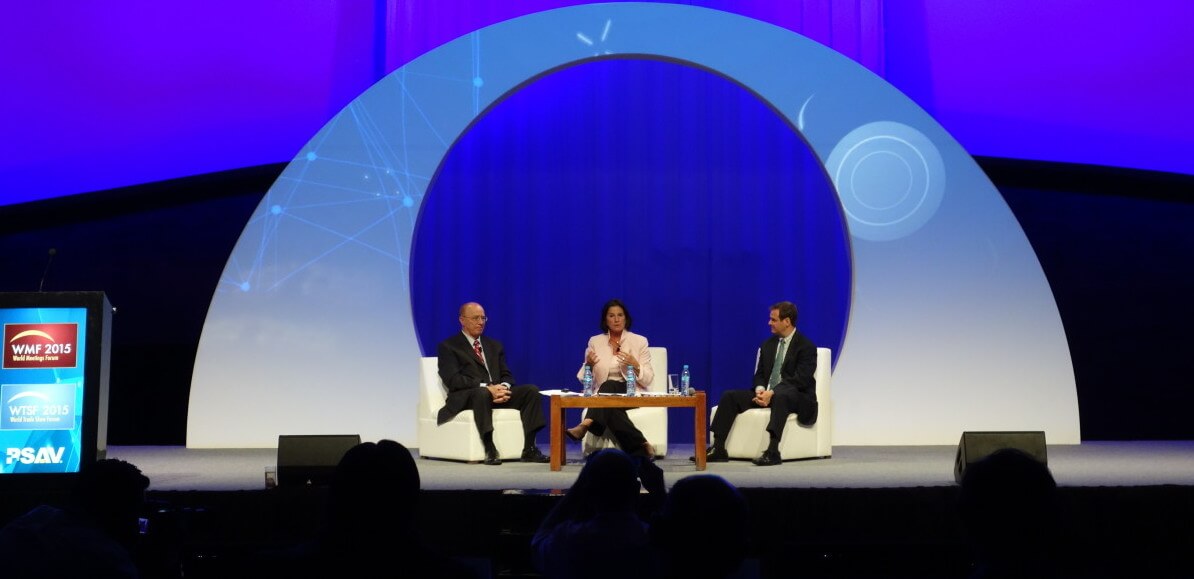Traditional conferences are overflowing with presentations. But how do you ensure that your speakers deliver talks that will engage your audience? Well, unless you coach every one of them as thoroughly as TED organizers do, it’s tough. But the good news is that you can significantly help them by setting the right session format.
Here are four simple, yet effective meeting design hacks we learned at the leading conferences. Take a look at how to transform your traditional presentation sessions and improve your delegates’ learning.
Shorten presentation time
With presentations, less is always more.
Neuroscience studies show that people are able to pay attention for only about 20 minutes. After this point, their minds start to drift away. And this is exactly what TED organizers did, they cut traditional hour-long presentations into digestible 18-minute talks. Needless to say that people love them!
We see many conferences following the lead.
The award-winning Festival of Marketing in London brought its 3,000 delegates over 120 sessions. Except the opening and closing sessions, all were 30min long with the 5-10min Q&A included. And it was the Q&A time that allowed participants to go deeper into topics and get their inquiries answered. On average participants asked 11 questions with 17 upvotes per session.

If you want to make your presentation sessions even brisker, there are formats such as Pecha Kucha or Lightning Talks that allow speakers to have only 20 slides, with 20 seconds per slide, to present their project. This way, you can expose your attendees to a large number of new ideas in a very short time.
Insert activities for active interpretation
While TED-style talks are super-effective for inspiring your delegates, there are situations where your speakers simply need (or insist on having) 40-60 minutes to elaborate on their area of expertise. To keep attendees engaged, you can suggest to your speakers that they create breaks with interpretative activities.

To make this format possible, sit your delegates at round tables in groups of six. Brief your speaker to break up their presentation every 20 minutes in order to give attendees a chance to discuss their viewpoints on what they just presented. This way, not only can people better internalize newly presented information, but they can also refocus on the next block.
Dedicate more time to audience questions
Extending time for Q&A is probably the easiest way to bring more interaction into your event without changing its fundamental format. If facilitated well, Q&A sessions can become a moment of the highest learning value for many of your delegates as the experts can address the questions and topics that the attendees brought up.
We observed that dedicating one-fourth of the session time to the Q&A can provide enough space for speakers to deliver their answers. So as a rule of thumb, for a 30-minute long slot, allocate 20-25 minutes to the talk and 5-10 minutes to the Q&A.
To maximize the Q&A time, the audience response systems such as Slido, or some use Twitter for this purpose, can help you crowd-source and prioritize audience questions during the talk. This way, you can have a list of questions ready to kick off the Q&A as soon as the speaker finishes and seamlessly turn their presentation into a conversation.
Leverage fireside chats
No matter how engaging the talks might be, delegates usually get bored after a few of them. People like diversity. Conducting an interview instead of another slideshow could be a welcome change.
Many of the leading conferences such as the SaaStr Annual Conference or Startup Grind events, to name a few, have given up presentations in favour of onstage interviews with their guests.

But to make your fireside chat a success, having a skilled facilitator is key. Not only does she need to have a thorough knowledge of the speaker’s background, but she also needs to understand the audience needs and serve as their champion on stage.
By integrating audience questions into the interview as early as within first 10-15 minutes, your facilitator can keep people hanging on the edge of their chairs, waiting for the answers.
Wrap up
The techniques that we proposed in this article are simple, but if applied well by a competent speaker or facilitator, they can have a dramatic effect on the overall interaction at your event. They might be one small step for you as an event organizer but one giant leap for your audience.




